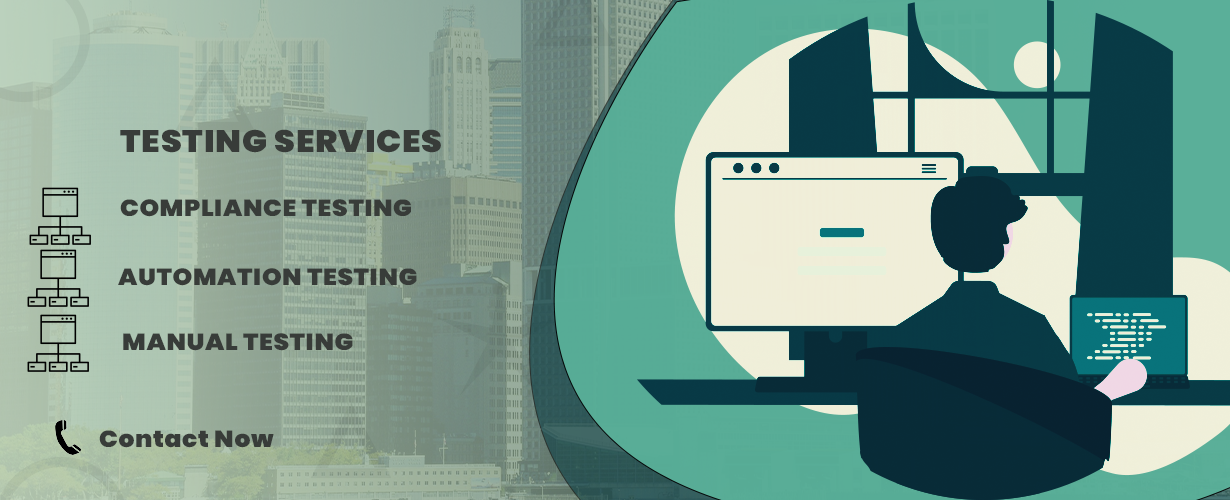Overview
In any software development lifecycle (SDLC), different testing types must adhere to and meet the desired functionality, performance, security, and user experience criteria. Every testing is meant to accomplish one thing: it targets a specific aspect of the application that will evaluate only certain features and functionality to enhance its overall quality. While explaining this, we will also look at different types of testing used in SADigisoft Technologies, which can help you apply the relevant type when required.
Functional Testing
What is Functional Testing?
Functional Testing is a software test that validates the system against functional requirements. Here, it looks at a few aspects:
- User Interface (UI)
- APIs (Application Programming Interfaces)
- Databases
- Security Features
- Client/Server Applications
How is Functional Testing Performed?
- Understanding the Requirements: The first and foremost thing to do when testing is to understand the software's functional specifications.
- Design Test Cases: These should include all possible user test scenarios.
- Execute Test Cases: Run through your list of test cases to verify whether the software is working as expected.
- Report and Fix Issues: Document any system discrepancies, bugs, or defects so developers can fix them.
Benefits:
- It confirms that the software is performing as it must.
- Catches many types of errors early in the development phase.
- Delivers a working product, hence satisfying its users.
Performance Testing
What is Performance Testing?
Performance Testing includes a set of tests to verify how well the software application performs under an array of specific conditions, such as load, stress, scalability, and stability. This testing is essential as it helps you discover potential performance issues before going live.
Performance Testing Process:
- Performance Criteria: Provide benchmarks for appropriate performance in various scenarios.
- Simulate Load Conditions: Use tools to simulate users who load as expected on software (OS).
- Performance Monitoring: Monitor the response time, throughput, and software resource utilization.
- Examine Outcomes: Identify service bottlenecks and determine their root causes.
Benefits:
- Assesses performance at runtime before deployment.
- Enhances speed and efficiency.
- Verifies that the software does not crash under peak user loads.
Security Testing
What is Security Testing?
Security Testing aims to identify software application vulnerabilities, threats, and risks to mitigate security loopholes before malicious attacks. This testing is critical for protecting system data and resources from unauthorized access.
Security Testing Steps:
- Define Security Requirements: Establish security criteria and compliance requirements the software must conform to.
- Run Scheduled Vulnerability Scans: Use automated tools to identify security vulnerabilities.
- Penetration Testing: Simulate attacks to identify vulnerabilities.
- Analyze and Mitigate Risks: Review and mitigate risks using tools like an impedance matrix.
Benefits:
- Protects sensitive data.
- Ensures compliance with regulatory requirements.
- Increases customer confidence by providing safer software products.
Usability Testing
What is Usability Testing?
Usability Testing evaluates the user interface and software experience to determine how user-friendly or intuitive they are. This testing is crucial for making the software easily usable and navigable by end-users.
How to Conduct Usability Testing:
- Establish Test Goals: Identify which parts of the user experience you want to test.
- Choose Participants: Select a representative sample of users.
- Testing Sessions: Run tests where participants interact with the software while you observe them.
- Analyze Feedback: Gather insights from users and make necessary adjustments to the software.
Benefits:
- Enhances user satisfaction.
- Reduces learning curves.
- Increases software adoption by providing an intuitive interface.
Compatibility Testing
What is Compatibility Testing?
Compatibility Testing ensures the software application works well in different environments, including browsers, devices, operating systems, and network conditions.
How to Conduct Compatibility Testing:
- Identify Target Environments: Determine which browsers, devices, and OS versions the software must support.
- Prepare Test Scenarios: Develop scenarios that mimic how users interact with the software in different environments.
- Execute Tests: Run the software in each target environment.
- Resolve Compatibility Issues: Adjust the software to function correctly in all necessary environments.
Benefits:
- Provides a unified user experience across different environments.
- Mitigates potential user dissatisfaction.
- Extends the software's accessibility.
Regression Testing
What is Regression Testing?
Regression Testing is performed whenever software updates or changes are made to confirm that newly added code has not negatively affected existing features. This is critical for maintaining software stability and reliability.
Regression Testing Steps:
- Identify Affected Areas: Determine which software parts have been affected by the changes.
- Select Appropriate Test Cases: Identify and select the test cases required for different functionalities.
- Run Tests: Execute the selected test cases to ensure no issues have been introduced.
- Fix Any Bugs: Address any problems found during testing to prevent software instability.
Benefits:
- It prevents new bugs from being introduced with updates.
- Maintains software stability.
- Preserves user trust by providing high performance.
Why Choose SADigisoft for Testing Types?
- Expertise: Our team has extensive experience with various types of testing, ensuring your software is thoroughly evaluated.
- Tailored Solutions: We customize our testing approaches to meet your project's unique requirements, offering comprehensive coverage and impeccable results.
- State-of-the-Art Tools: We utilize top-notch tools to deliver accurate and efficient testing outcomes.
- Quality Assurance: Our rigorous testing processes ensure the software's quality, performance, and security.
At SADigisoft Technologies, we believe in delivering robust software solutions that serve our clients well. Our end-to-end testing services ensure your software surpasses user expectations. Collaborate with us to leverage our top-notch software quality assurance capabilities and gain confidence in delivering a successful product.


